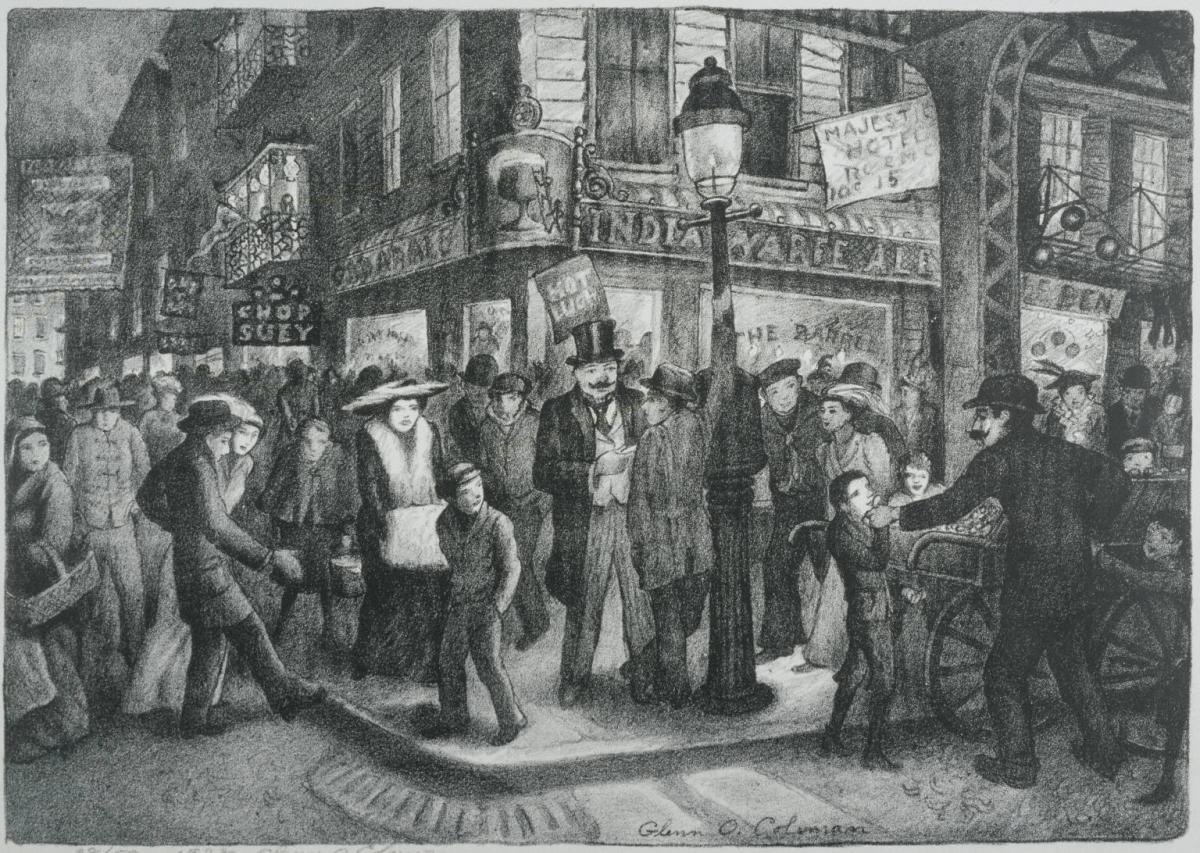The Bowery
Glenn O. Coleman ( 1928 )

Glenn O. Coleman moved to New York City in 1905 from Indianapolis, Indiana.[1] He developed a deep love for the city, which translated into a three-decade career committed to depicting it and its inhabitants through lithographs and paintings. Coleman studied at the New York School of Art from 1906 to 1909, and also under Robert Henri, a founder of the Ashcan School, at the Henri School of Fine Art in 1909.[2] As modern art in America began to take off, Coleman’s Ashcan School depictions of working-class communities and street-level views of American cities played an integral role in the developing genre of Social Realism in American Scene painting.[3]
The Bowery is one in a series of lithographs focusing on working-class neighborhoods in New York City. In the 1920s, Bowery Street, dotted with dive bars and inexpensive restaurants, was considered a slum. Judging by their clothing, the crowd is working class except for the large, affluent man in evening dress who stands by the lamppost at the center of the scene. Coleman’s depictions of working-class communities does not stop at the subject: it is evident in his style. Gray skies appear to be filled with soot, and the structures look grime-covered. Depictions of dark cityscapes, favored by Ashcan artists, allude to the industrialization of American cities, which often brought pollutants into impoverished areas. More than a decade before completing The Bowery, Coleman regularly published cartoons in The Masses,a socialist magazine running from 1911 to 1917, alongside other Ashcan artists under the direction of John Sloan.[4]
Duncan Phillips purchased The Bowery in 1952 from Charles Simon, who appears to have been a devoted collector of Coleman’s work. He gifted many of his pieces to museums and galleries.
Text by Rebecca Shipman as part of the Seeing U.S. Research Project
[1] Ann Lee Morgan, Oxford Dictionary of American Art and Artists (New York: Oxford University Press, 2007), s.v. “Glenn O. Coleman.”
[2] “Glenn O. Coleman, Stuart Davis, and Henry Glintenkamp,” Graphic Arts Collection, Special Collections, Firestone Library, Princeton University, https://graphicarts.princeton.edu/2018/05/29/glenn-o-coleman-stuart-davis-and-henry-glintenkamp, accessed December 8, 2023.
[3] E. M. Benson, “The American Scene,” The American Magazine of Art 27, no. 2 (1934): 53–66.
[4] “Glenn O. Coleman, Stuart Davis, and Henry Glintenkamp.”